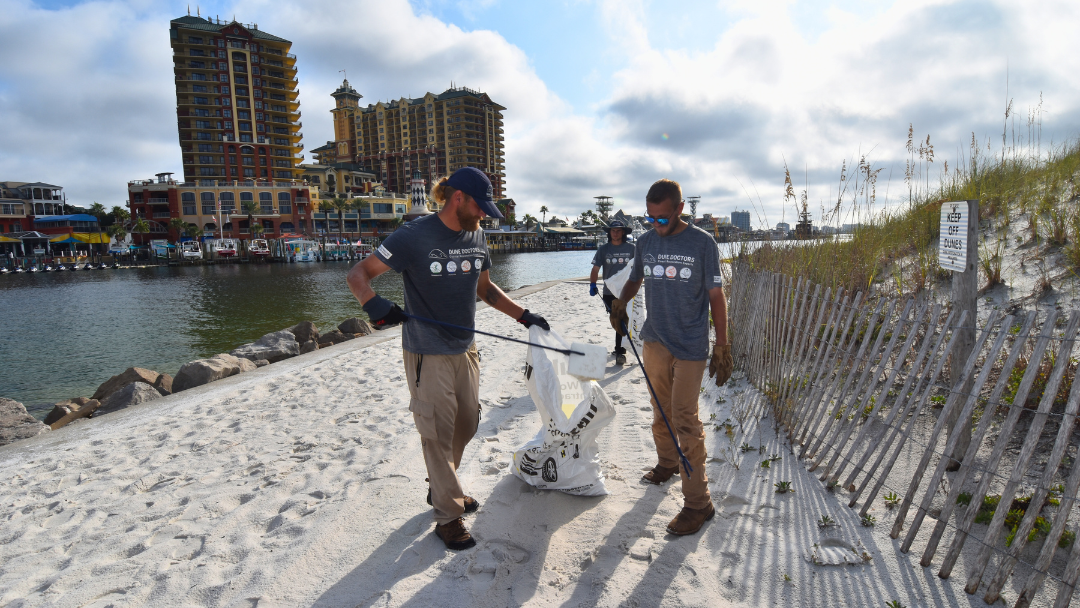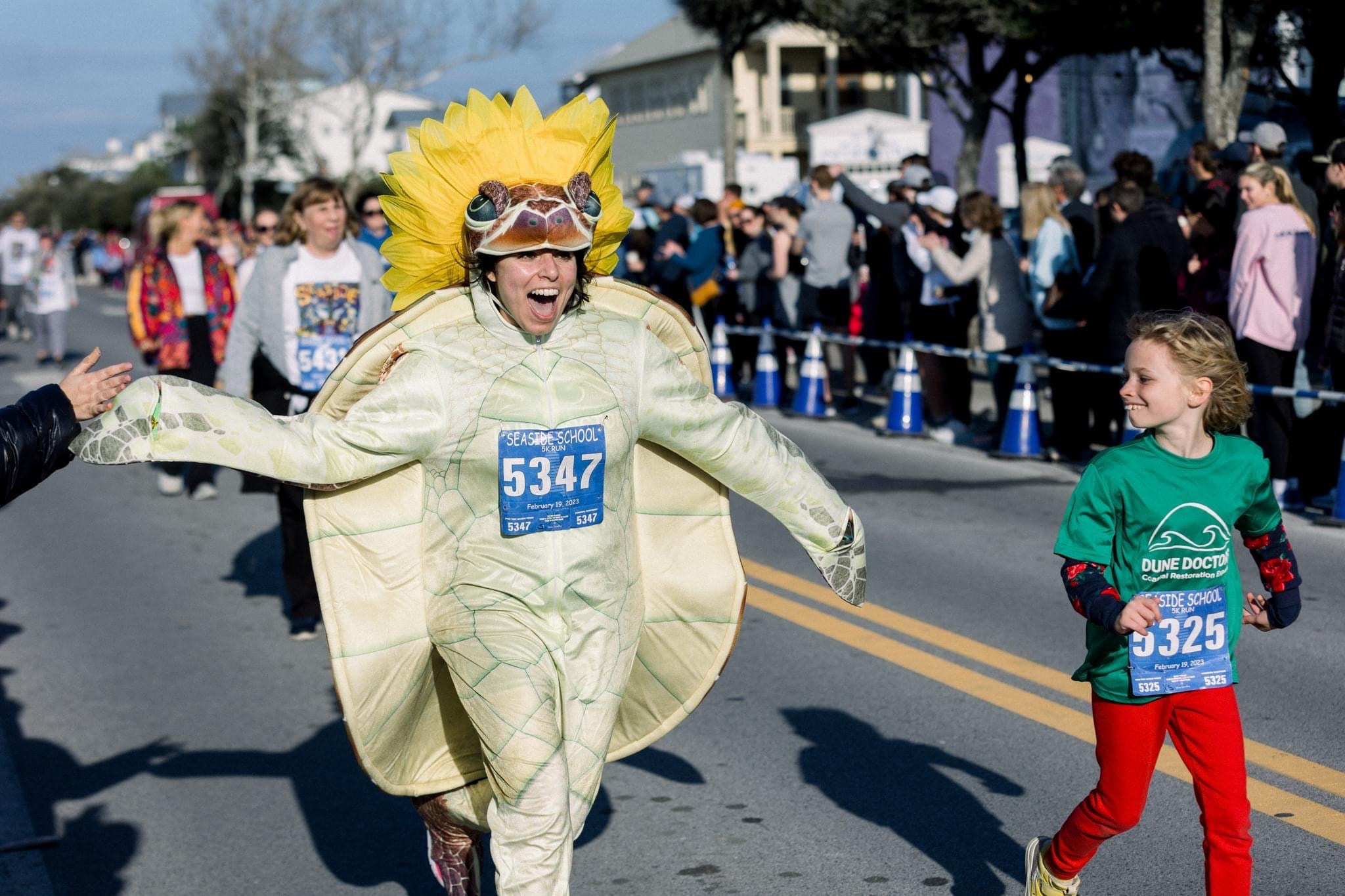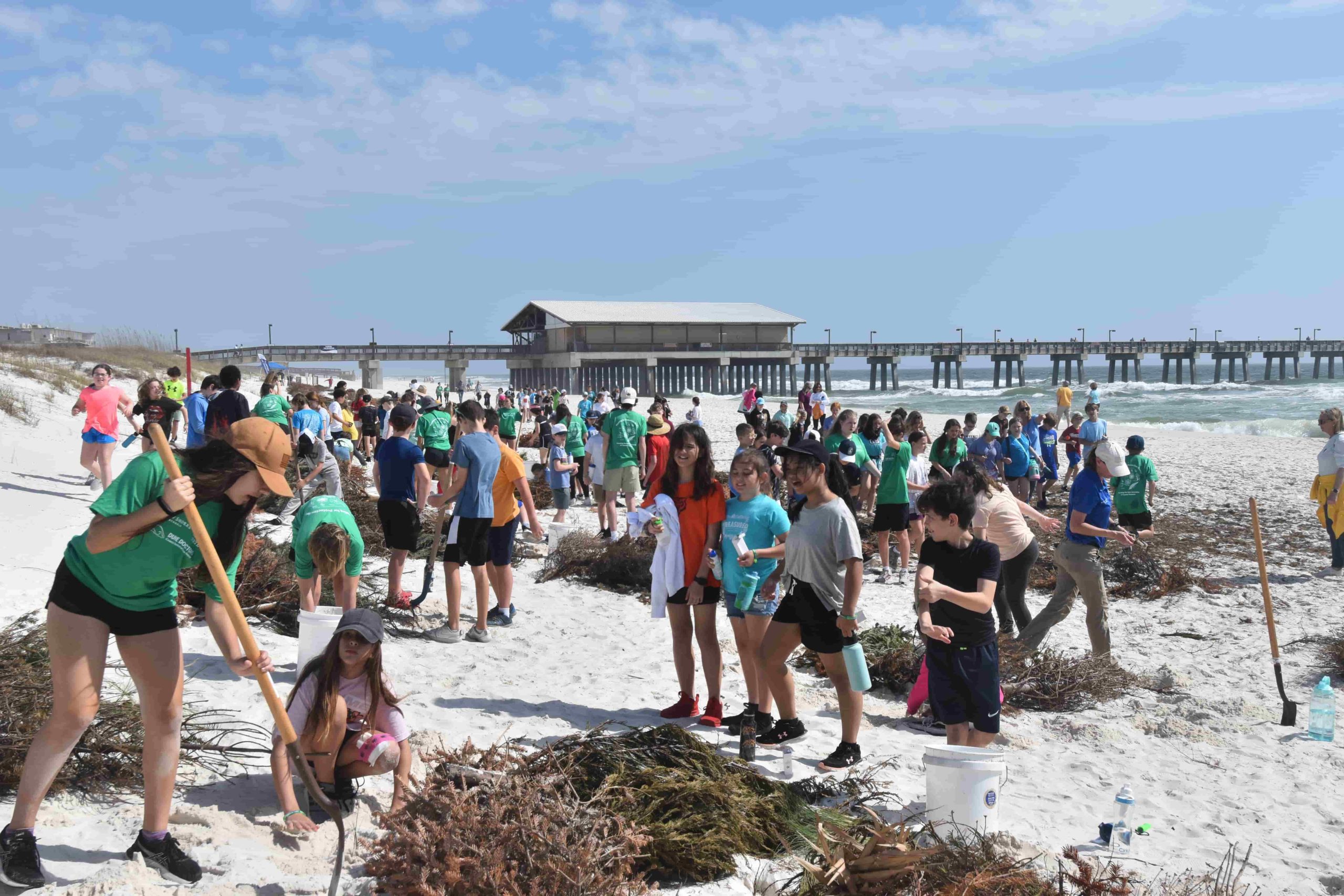- Article Highlight: Florida’s beach-nesting birds need your help! Development has decreased the birds’ nesting habitat, so mindful cohabitation is necessary to ensure successful nesting.
- Key Takeaway: The key to successful nesting is to minimize human disturbances. A good rule of thumb is: if you cause a bird to take flight, you are too close.
- Take Action: Watch the video below to better understand how to help shoreline birds. If you’re a waterfront property owner, reach out to Dune Doctors to have our coastal restoration experts come evaluate the health of your native landscape and address any erosion issues that impact both your property and wildlife.
The beach teems with life during warm weather. While tourists flock in mass to enjoy the coastline, millions of birds do the same – seeking out isolated Florida beaches to build nesting colonies. With this increase in human activity overlapping such a critical time in the lifecycle of different shoreline birds, mindful cohabitation is necessary to keep the environment safe and conducive to nesting. Ongoing development has made it increasingly difficult for coastal wildlife to find undisturbed, people-free beaches. Therefore, as the nesting birds are forced to share the environment with beachgoers, Coastal Stewards can help protect them by educating others on how to enjoy themselves without posing a threat to the nesting population. Through collective awareness, we can increase nesting success and hatchling survival. Below are eight ways to help beach-nesting shorebirds.
How to Help Beach-Nesting Birds Fledge their Young
According to the Florida Fish and Wildlife, birds that migrate to Florida have flown hundreds of miles to reach our shores and are “pushed to the very limit of their physical abilities” when they arrive. In a weakened state, the birds become highly susceptible to any disturbances and prefer to nest on barrier islands and sandbars, away from land predators. However, human and domesticated animals present a considerable risk – as these barrier islands and sand bars, once isolated areas, now increasingly attract beachgoers, their pets, and their boats. The vulnerable populations include gulls, terns, black skimmers, plovers, willets, and oystercatchers. Coastal Stewards can help Florida’s beach-nesting birds fledge their young by following the steps below.
- Stay at least 500ft away from a group of birds. Minimizing disturbance is the key to successful nesting. The camouflaged nests are not easy to spot, so stay back to avoid accidentally crushing eggs and hatchlings.
- Don’t force the birds to fly. Flushing them will cause adults to leave their hatchlings vulnerable to scorching sunlight. With enough disturbances, the adults may abandon the nesting colony altogether.
- Leave pets at home or keep them leashed. One dog can compromise an entire colony in a matter of seconds.
- Don’t leave any trash, fish scraps, or food behind. Predators like raccoons, foxes, and coyotes will follow these food sources to the beach.
- Don’t feed the birds. The food source, again, attracts predators.
- Don’t shoot off personal fireworks. Fireworks scatter debris along the beach, and birds may eat it. Also, the noise frightens the adults and hatchlings, leading to potential nest abandonment.
- Respect nesting warning signs. Avoid areas that are sectioned off for nesting and encourage other beachgoers to do the same.
- Get involved! The Audubon Society and other environmental agencies are always on the lookout for volunteers. Click here to find out more.
Remember: If a bird takes flight or dive-bombs you, you are too close.
How Can Coastal Property Owners Help Protect Shoreline Birds?
Waterfront property owners can help nesting wildlife by preserving and maintaining their coastal landscape. If a private dune system is overrun with invasive plants and dead plant material (thatch), it creates a hospitable environment for invasive animals that will prey on native species. Furthermore, if erosive issues like stormwater that drains seaward through the dune, an active irrigation system that kills dune-stabilizing vegetation, or unmanaged foot traffic are not addressed the dune system will enter a heightened state of erosion – negatively impacting the beach where shoreline birds build nesting colonies. Healthy, well-maintained coastal dunes are the first lines of defense against storm surge. However, their purpose extends beyond absorbing the impact of destructive wave action. Dunes are part of the coastal ecosystem that hosts a wide range of resilient animals. From shoreline birds to sea turtles and dune mice, the survival of these species, much like the survival of coastal communities, depends on proactive stewardship of our native protective landscape. That being said, proactive coastal stewardship is achieved through longterm planning and consistent dune maintenance. Dune Doctors can help you build sustainable coastal resiliency and solve erosion issues that are impacting your dune system with a personalized Dune Master Plan™ that addresses the unique needs of your property. Our team will manage all aspects of restoring and maintaining your coastal landscape in full compliance with local and federal environmental regulations. Reach us at 866-386-3737 or contact us through this form to request a site visit today.
Coastal Steward Resources to Help Shoreline Birds:






